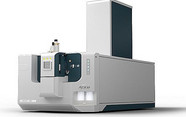Save time, money and resources, and ultimately deliver a healthy return on investment using a Particle Size Analyzer

contributed by Malvern Panalytical |
Five ways that the Mastersizer 3000 saves you money
Abstract
Instruments must meet certain practical criteria and stand-up to rigorous economic evaluation. For analytical labs that need particle sizing, laser diffraction systems are typically the technology of choice. We look at how the Mastersizer 3000 particle size analyzer from Malvern Instruments can save you time, money and resources, delivering return on investment.
To earn its place in today’s busy analytical laboratories, an instrument must meet certain practical criteria, and stand-up to rigorous economic evaluation. For labs that need particle sizing, laser diffraction systems are typically the technology of choice; delivering accurate and reliable information for the broadest range of sample types. Here, we look at how the Mastersizer 3000, the market leading laboratory particle size analyzer from Malvern Instruments, can save you time, money and resources, and ultimately deliver a healthy return on investment.
Assured analysis
When every measurement is sound, data integrity is secure, and repeat analysis unnecessary, boosting productivity.
The consistent production of accurate data eliminates the need for repeat measurements and is a cornerstone of high lab productivity. Developing a robust method, that will work consistently, is the first step and relies on scoping out the effect of all factors with a potential impact. Multiple features of the Mastersizer 3000 support direct investigation of the sensitivity of a method to key parameters. For example, the Optical Property Optimizer enables the user to quickly assess the sensitivity of results to the analysis parameters used to calculate particle size distributions. The Hydro Sight accessory, on the other hand, allows visual scrutiny, and statistical analysis of the state of dispersion. Such capabilities make it easier to develop a method that is inherently robust, for any specific sample.
Log in or register to read this article in full and gain access to The Analytical Scientist’s entire content archive. It’s FREE!

















